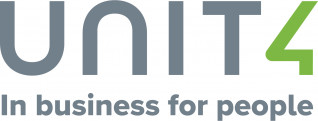From simply involving disadvantaged populations to help with aspects of service and program delivery to the public, to the complex, interrelated obligations of Social Impact Bonds, the concept of social impact investing is gaining considerable traction in Canada and globally. In this article, we will focus on the latter, often referred to as “SIBs.”
What Are Social Impact Bonds?
Usually a three-way agreement among government, private investors, and service providers, SIBs strive to provide a stable source of non-government funding so that (typically) not-for-profit agencies are able to deliver programs designed to help create a positive social impact. With financial return to the investors based on achievement of clear and measurable social outcomes over a specified period of time, SIBs and other forms of social financing drive specific results that are beneficial to society as a whole, without the traditional reliance on government funding.
Illustration: Sweet Dreams – New Home for Single Mothers
Objective: Sweet Dreams is a supported-living home for at-risk single mothers in Saskatoon. When single mothers receive housing and other support, they are more attached to their children and less likely to have them go into care. This in turn reduces the costs to government of ongoing support for the children, and ultimately strengthens the fabric of society.
Under the program, at-risk mothers are provided with affordable housing and support while they complete their education, secure employment, or participate in pre-employment activities such as life skills training and parenting classes. The ultimate goal is to help these families transition back into the community, and the specific measurement is the number of families leaving the supported accommodation and staying together for more than six months without re-entering care.
Funding Model: Under the Social Impact Bond agreement between the government of Saskatchewan, Conexus Credit Union, Wally and Colleen Mah, and EGADZ (the service provider for Saskatoon’s Downtown Youth Centre), the service provider receives $1 million from the private investors to achieve the specific social outcome set by the government – in this case, to keep children out of foster care.
Outcome Measurement: Critical to the success of SIBs, return on investment to the investors hinges on the achievement of specific and measureable social impact results to be achieved by the service provider over a specific period of time. In the case of Sweet Dreams, the success of the social outcome will be measured by an independent assessor at the end of the second, fourth and fifth years of the agreement.
This latter aspect of these arrangements is the trickiest, due to the causality issue. Governments across the country and around the world still struggle to measure social outcomes in a precise and defensible manner. And even if the social outcome is achieved, to what degree is that attributable to the program delivered by the SIB agency, and to what degree is it due to outside factors? If the outcome is not achieved within the specified period of time, then the government doesn’t pay out the return to investors. This, in itself, is a major shift for government, given the political overlay.
It is critical to have the right planning, the right parties, and the right expertise when contemplating complex arrangements such as SIBs. Deloitte LLP was the financial advisor on the Sweet Dreams agreement.
SIBs in Other Jurisdictions
It is still early days for SIBs in Canada, although they have been implemented in other jurisdictions such as the UK with varying degrees of success for many years. A quick Google search will uncover different SIBs, such as agreements designed to reduce the reoffending rates of short-sentence offenders, reduce the number of young people entering Pupil Referral Units in the UK, and many more related to returning children from government care to their families, or preventing government placement altogether.
Some Differences between Alternative Service Delivery (ASD) and Social Impact Investing
- ASD tends to result in contracts with a single provider, while SIBs tend to fund a portfolio of interventions.
- With ASD, the service providers may have trouble accessing working capital and startup funding. With SIBs, the service-provider costs are covered by investors up front.
- With ASD, the government usually only pays for success, while the risk and associated costs of unsuccessful interventions are typically borne by the service provider. With SIBs, the risk is borne by the third-party investors.
- The ASD contract typically sets a threshold for success, and payment is either made or not made depending on whether the threshold is reached. SIBs generally involve outcome payments that are proportionate to the success.
Readers are cautioned not to rely upon this article as legal advice nor as an exhaustive discussion of the topic or case. For any particular legal problem, seek advice directly from your lawyer or in-house counsel. All dates, contact information and website addresses were current at the time of original publication.
National Education Consulting Inc.
Phone: (250) 370-0041 Toll Free: (888) 990-7267


.png)
.png)




